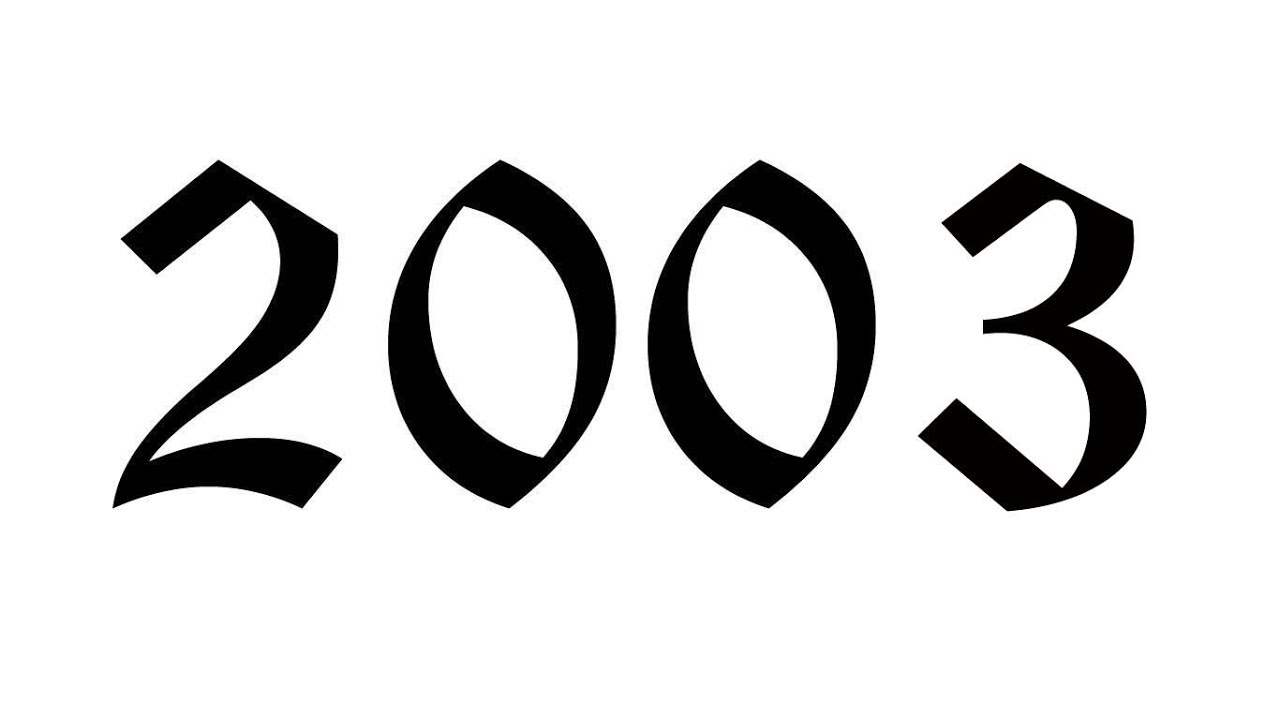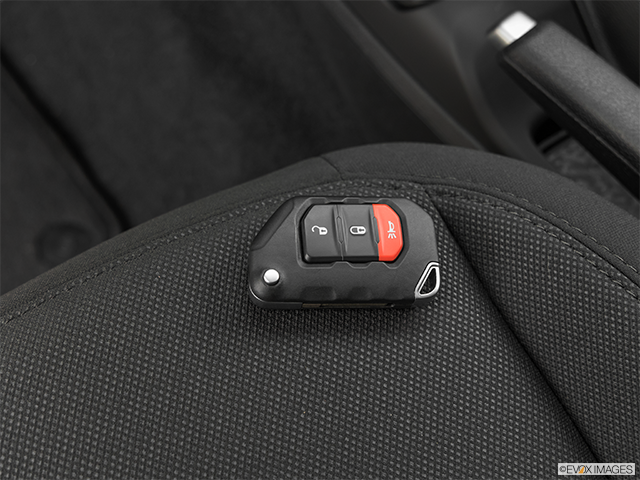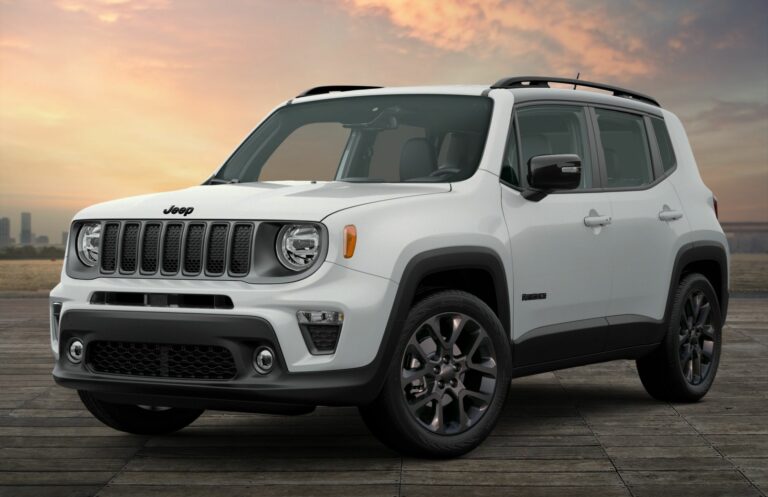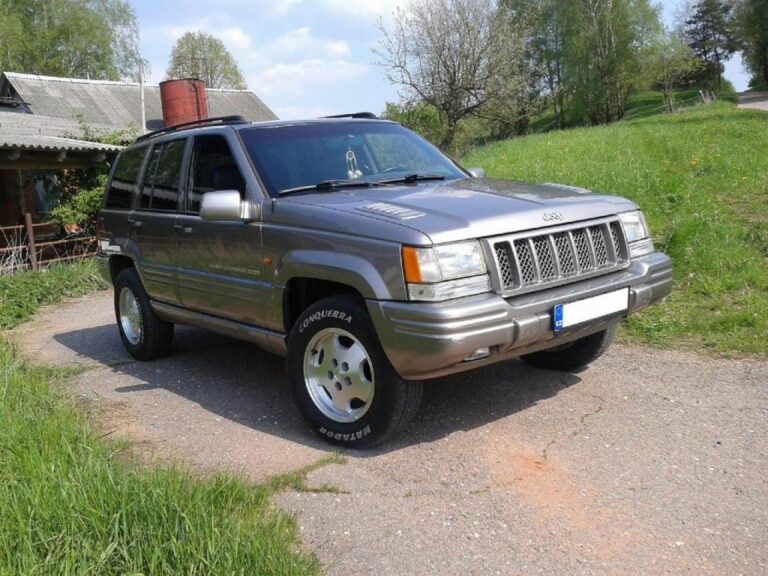2003 Jeep Grand Cherokee Headlights: Illuminating the Path Ahead
2003 Jeep Grand Cherokee Headlights: Illuminating the Path Ahead jeeps.truckstrend.com
The 2003 Jeep Grand Cherokee, part of the beloved WJ generation, remains a popular and capable SUV, cherished by enthusiasts for its rugged charm and off-road prowess. Yet, like any vehicle approaching two decades of service, its components require attention to maintain optimal performance and safety. Among the most critical of these components are its headlights. Far more than mere aesthetic features, the 2003 Jeep Grand Cherokee Headlights are the eyes of your vehicle, providing crucial visibility for night driving, inclement weather, and ensuring you can see and be seen by others on the road. Understanding their function, maintenance, and upgrade options is paramount for any WJ owner looking to preserve their vehicle’s integrity and, most importantly, their safety.
This comprehensive guide will delve into every aspect of the 2003 Jeep Grand Cherokee Headlights, from their original design and common issues to modern upgrade paths and essential maintenance tips. Whether you’re dealing with dim illumination, hazy lenses, or simply seeking to enhance your night driving experience, this article offers practical insights and actionable advice to keep your WJ’s path brightly lit.
2003 Jeep Grand Cherokee Headlights: Illuminating the Path Ahead
Anatomy of Illumination: Understanding the 2003 Grand Cherokee Headlight Assembly
The factory headlight system on the 2003 Jeep Grand Cherokee consists of a few key components integrated into a single assembly:
- Headlight Housing: This is the primary plastic or polycarbonate structure that holds all other components. It’s designed to be sealed against moisture and dirt.
- Lens: The clear outer cover, typically made of polycarbonate plastic, which protects the bulbs and directs the light beam. Over time, these can yellow and haze due to UV exposure.
- Reflector: A highly reflective surface inside the housing, designed to bounce light from the bulb forward, creating the beam pattern. The 2003 Grand Cherokee primarily used a reflector-based system for its low and high beams.
- Bulbs: The light sources themselves. From the factory, the 2003 Grand Cherokee typically used halogen bulbs for both low beam (9006) and high beam (9005). Some models might have had separate fog lights as well.
- Wiring Harness and Connectors: These provide electrical power to the bulbs.

While relatively simple, each of these components plays a vital role in the overall performance and longevity of your 2003 Jeep Grand Cherokee Headlights.
The Crucial Role: Why Headlights Matter for Your WJ
The importance of well-functioning 2003 Jeep Grand Cherokee Headlights cannot be overstated. They are essential for:
- Safety First: Adequate illumination is critical for seeing obstacles, road signs, pedestrians, and other vehicles, especially during dawn, dusk, or night driving. Properly functioning headlights also ensure other drivers can see your vehicle, significantly reducing the risk of accidents.
- Legal Compliance: Most jurisdictions have strict regulations regarding headlight brightness, color, and functionality. Operating a vehicle with non-functional or improperly aimed headlights can result in fines and legal penalties.
- Night Driving Confidence: Driving at night can be stressful, particularly on unlit roads. Bright, clear headlights reduce eye strain and increase driver confidence, making your journey safer and more comfortable.
- Vehicle Aesthetics and Value: Clear, functional headlights contribute significantly to the overall appearance of your 2003 Grand Cherokee. Hazy or broken headlights can make an otherwise well-maintained vehicle look neglected, potentially affecting its resale value.

.jpg?t=168533101131)
Types of Headlight Technologies for Your 2003 Grand Cherokee
When considering replacement or upgrades for your 2003 Jeep Grand Cherokee Headlights, you’ll encounter several technology options beyond the original halogen bulbs:
-
Halogen Bulbs:
- Description: The standard factory bulb type. A filament inside a glass capsule is heated to incandescence, producing light.
- Pros: Affordable, widely available, easy to replace, warm yellowish light that performs well in fog.
- Cons: Shorter lifespan (500-1000 hours), less bright compared to newer technologies, lower color temperature (yellowish light).
-
HID (High-Intensity Discharge) / Xenon:
- Description: These bulbs produce light by igniting noble gases (like xenon) with an electrical arc between two electrodes. They require a ballast to regulate power.
- Pros: Significantly brighter than halogens, whiter light (typically 4300K-6000K color temperature), longer lifespan (2,000-3,000 hours).
- Cons: More expensive, require a ballast and sometimes projector retrofits for proper beam patterns (otherwise, they can cause excessive glare in reflector housings), slower to reach full brightness.
-
LED (Light Emitting Diode):
- Description: LEDs produce light when an electrical current passes through a semiconductor. They are highly efficient and versatile.
- Pros: Extremely bright, very energy-efficient, incredibly long lifespan (20,000-50,000+ hours), instant-on, often available in a cool white color temperature (6000K+).
- Cons: Can be expensive, heat management is crucial (require heat sinks/fans), can cause glare if installed in standard reflector housings without proper optics (projectors), may require CANBUS decoders to prevent flickering or error messages.
-
OEM vs. Aftermarket Headlight Assemblies:
- OEM (Original Equipment Manufacturer): These are direct replacements made to the exact specifications of the original parts. They guarantee a perfect fit and consistent quality.
- Aftermarket: A vast market offering everything from basic replacement assemblies to custom designs (e.g., projector-style, blacked-out housings, integrated LED DRLs). Quality varies widely; it’s crucial to choose reputable brands to avoid poor fitment, premature failure, or substandard light output.
Common Issues and Troubleshooting for 2003 Grand Cherokee Headlights
Even the most robust systems can develop problems. Here are common issues affecting 2003 Jeep Grand Cherokee Headlights and how to approach them:
- Dim or Flickering Lights: This often indicates an aging bulb nearing its end of life. However, it can also point to a loose connection, corroded wiring, a failing fuse, or an issue with the vehicle’s electrical system (e.g., alternator).
- Hazy/Yellowed Lenses: A pervasive problem for older vehicles. The polycarbonate lens degrades from UV exposure, leading to oxidation, which manifests as a cloudy, yellow film. This significantly reduces light output.
- Condensation Inside Housing: If seals around the housing are compromised, moisture can enter, causing condensation and potentially damaging internal components or corroding electrical connections.
- Burned Out Bulbs: The most straightforward issue, typically requiring a simple bulb replacement. Always replace bulbs in pairs to ensure balanced illumination and avoid one side being brighter than the other.
- Misaligned Beams: Headlights that are aimed too high can blind oncoming drivers, while those aimed too low reduce your visibility. This can happen after an accident, component replacement, or simply over time.
Maintaining and Upgrading Your 2003 Grand Cherokee Headlights
Keeping your 2003 Jeep Grand Cherokee Headlights in top condition involves both routine maintenance and strategic upgrades.
Routine Maintenance:
- Regular Cleaning: Periodically wipe down the headlight lenses with a soft cloth and automotive glass cleaner. This removes dirt, bugs, and road grime that can obscure light.
- Lens Restoration: For hazy lenses, consider a headlight restoration kit. These kits typically involve sanding, polishing, and sealing the lens. While DIY kits offer a temporary solution, professional restoration or replacement of the entire assembly provides longer-lasting clarity.
- Bulb Inspection: Before long trips, quickly check that all your headlights (low beam, high beam, fog lights) are functioning correctly.
Bulb Replacement (How-To – General Steps):
Replacing the bulbs in your 2003 Grand Cherokee is a relatively simple DIY task.
- Access: Open the hood. The headlight assemblies are typically accessible from behind. You might need to remove a few retaining clips or screws to pull the assembly slightly forward or gain better access.
- Disconnect Power: Twist the bulb’s connector counter-clockwise to unlock it from the housing, then pull it off the bulb.
- Remove Old Bulb: Depending on the bulb type, it might be held in by a retaining clip or simply twist-locked into place. Carefully unclip or twist and pull the old bulb out. Avoid touching the glass of the new bulb, as oils from your skin can create hot spots and shorten its life.
- Insert New Bulb: Insert the new bulb, ensuring it’s correctly seated and aligned. Re-secure any retaining clips.
- Reconnect Power: Reconnect the electrical connector to the bulb.
- Test: Before closing everything up, turn on your headlights to ensure the new bulb works.
- Reassemble: Secure the headlight assembly back into its position.
Headlight Aiming (How-To – Basic Guide):
Proper aiming is crucial.
- Preparation: Park your Grand Cherokee on a level surface, 25 feet away from a flat wall. Ensure tire pressure is correct and the fuel tank is about half full.
- Markings: Measure the distance from the ground to the center of your low beam bulb. Mark this height on the wall. Also, mark the horizontal center of your vehicle on the wall.
- Adjustment: Turn on your low beams. The top edge of the brightest part of the beam should be at or slightly below your marked line on the wall. Use the adjustment screws on the headlight housing (typically one for horizontal, one for vertical adjustment) to fine-tune the beam. Consult your owner’s manual for precise aiming specifications.
Upgrading Considerations:
- Compatibility: Ensure any aftermarket bulbs (HID/LED) or assemblies are compatible with your 2003 Grand Cherokee’s electrical system (e.g., CANBUS compatible for LEDs to prevent errors).
- Legality (DOT Compliance): Many aftermarket HID/LED kits are not DOT (Department of Transportation) compliant when installed in reflector housings, as they can create excessive glare. Consider projector retrofits for a safer, legal, and more effective upgrade.
- Quality Over Cost: While budget options exist, investing in high-quality aftermarket or OEM replacement parts will save you headaches and ensure better performance and longevity.
- Professional Installation: For complex upgrades like HID or LED projector retrofits, professional installation is highly recommended to ensure proper wiring, sealing, and aiming.
Practical Advice and Actionable Insights
- Replace in Pairs: Always replace both left and right headlight bulbs simultaneously, even if only one has burned out. Bulbs dim over time, and replacing just one will result in uneven light output.
- Check Fuses First: If a headlight suddenly goes out, check the relevant fuse in your fuse box before assuming the bulb is bad.
- Gloves for Bulbs: When handling new halogen or HID bulbs, always use gloves or a clean cloth. Oils from your skin can create hot spots on the glass, leading to premature failure.
- Consider Driving Habits: If you frequently drive at night or in rural areas, an upgrade to brighter HID or LED lighting might be a worthwhile investment in safety and comfort.
- Regular Inspection: Make it a habit to quickly check your headlights and tail lights before driving, especially at night.
Price Guide: 2003 Jeep Grand Cherokee Headlights
Please note that prices are approximate and can vary significantly based on brand, retailer, quality, and current market conditions. This table provides a general range for common components and services related to 2003 Jeep Grand Cherokee Headlights.
| Item / Service | Description | Estimated Price Range (USD) | Notes |
|---|---|---|---|
| Halogen Bulbs (Pair) | Standard replacement bulbs (e.g., 9006 low beam, 9005 high beam) | $15 – $50 | Varies by brand (e.g., Sylvania, Philips, GE). High-performance halogens are at the higher end. |
| OEM Headlight Assembly (Each) | Brand new original equipment manufacturer replacement unit (housing + lens) | $150 – $350+ | For a single side. Offers perfect fit and OEM quality. |
| Aftermarket Headlight Assembly (Each) | Replacement unit from third-party manufacturers (housing + lens) | $70 – $250 | Quality and features vary widely. Some include projector lenses or LED DRLs. |
| HID Conversion Kit | Includes two HID bulbs, two ballasts, and wiring harness (for both sides) | $80 – $250 | May require projector retrofit for proper beam pattern and to avoid glare. Installation can be complex. |
| LED Conversion Kit | Includes two LED bulbs and necessary drivers/fans (for both sides) | $70 – $200 | "Plug-and-play" kits are common. May require CANBUS decoder for flicker-free operation. |
| Aftermarket Projector Headlights (Pair) | Complete aftermarket assemblies with integrated projector lenses for better light control | $200 – $500+ | Often include HID or LED-ready setups. Can significantly improve light output and aesthetics. |
| Headlight Restoration Kit (DIY) | Kit to clean, sand, and polish hazy lenses (for both headlights) | $15 – $40 | Temporary solution, results vary by effort and kit quality. |
| Professional Lens Restoration | Service by a detailing shop to professionally restore hazy lenses | $50 – $150 | For both headlights. Offers more durable and often better results than DIY. |
| Headlight Aiming Service | Professional adjustment of headlight beams | $30 – $70 | Often included with bulb replacement at some shops. |
| Installation Labor | Professional installation of new assemblies or conversion kits | $50 – $200+ | Varies by shop and complexity of the install (e.g., basic bulb vs. full retrofit). |
Frequently Asked Questions (FAQ)
Q1: Can I put LED bulbs in my factory halogen housings on my 2003 Grand Cherokee?
A1: Yes, you can physically install LED bulbs into your factory halogen housings. However, it’s generally not recommended for optimal performance or safety. Halogen housings are designed for a specific light source (halogen filament) and beam pattern. Installing LEDs, which emit light differently, can result in a scattered beam pattern, excessive glare for oncoming drivers, and reduced usable light on the road, despite the perceived brightness. For best results with LEDs, a projector headlight assembly designed for LEDs is ideal.
Q2: How do I restore hazy headlights on my 2003 Grand Cherokee?
A2: You can use a DIY headlight restoration kit, which typically involves cleaning, sanding with various grits of sandpaper, polishing, and applying a UV protectant. For more severe hazing or a longer-lasting solution, professional restoration by a detailer or replacing the entire headlight assembly is recommended.
Q3: How often should I replace my headlight bulbs?
A3: Halogen bulbs typically last between 500-1,000 hours, which translates to about 1-2 years of average driving. It’s recommended to replace them proactively, especially if you notice dimming, and always replace them in pairs to maintain even illumination. HID bulbs last longer (2,000-3,000 hours), and LEDs boast the longest lifespan (20,000-50,000+ hours).
Q4: Are aftermarket headlights as good as OEM for my 2003 Grand Cherokee?
A4: It depends on the aftermarket brand and product. Some high-quality aftermarket headlights can offer comparable or even superior performance and aesthetics (e.g., projector designs). However, many budget aftermarket options may have poorer light output, inferior sealing (leading to condensation), or less precise fitment compared to OEM units. Research brands and read reviews before purchasing.
Q5: What’s the difference between high beam and low beam bulbs on the 2003 Grand Cherokee?
A5: The 2003 Grand Cherokee uses separate bulbs for high and low beams (9006 for low beam, 9005 for high beam). Low beams provide a downward-angled, less intense light pattern designed for everyday driving, preventing glare for oncoming traffic. High beams provide a much brighter, broader, and farther-reaching light pattern for maximum visibility on unlit roads, to be used when no oncoming traffic is present.
Q6: Is it hard to replace the entire headlight assembly on a 2003 Grand Cherokee?
A6: Replacing the entire headlight assembly is generally a straightforward process for the 2003 Grand Cherokee, often requiring only basic hand tools. You’ll typically need to remove a few retaining screws or clips, disconnect the wiring harness, and then the assembly can be pulled out. It’s a common DIY task.
Conclusion: Clear Vision for Miles Ahead
The 2003 Jeep Grand Cherokee Headlights are more than just functional components; they are critical safety features that define your driving experience. From ensuring you can clearly navigate dark roads to making your iconic WJ visible to others, well-maintained and properly functioning headlights are indispensable. By understanding the different technologies available, recognizing common issues, and performing routine maintenance or strategic upgrades, you can significantly enhance your Grand Cherokee’s safety, appearance, and overall driving pleasure. Don’t let dim or hazy lights compromise your journey; invest in the clarity that keeps your path brightly lit for many more adventures to come.






